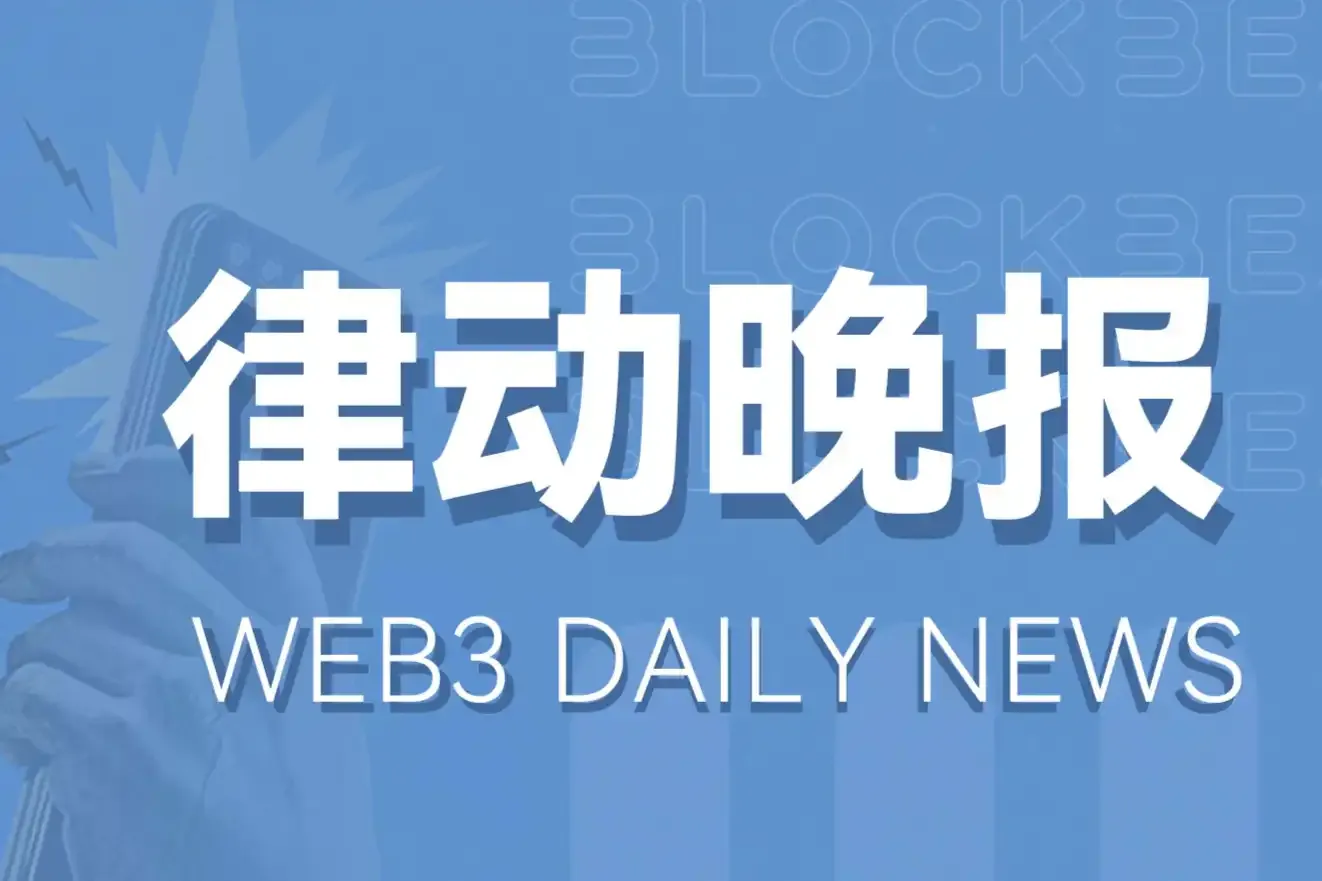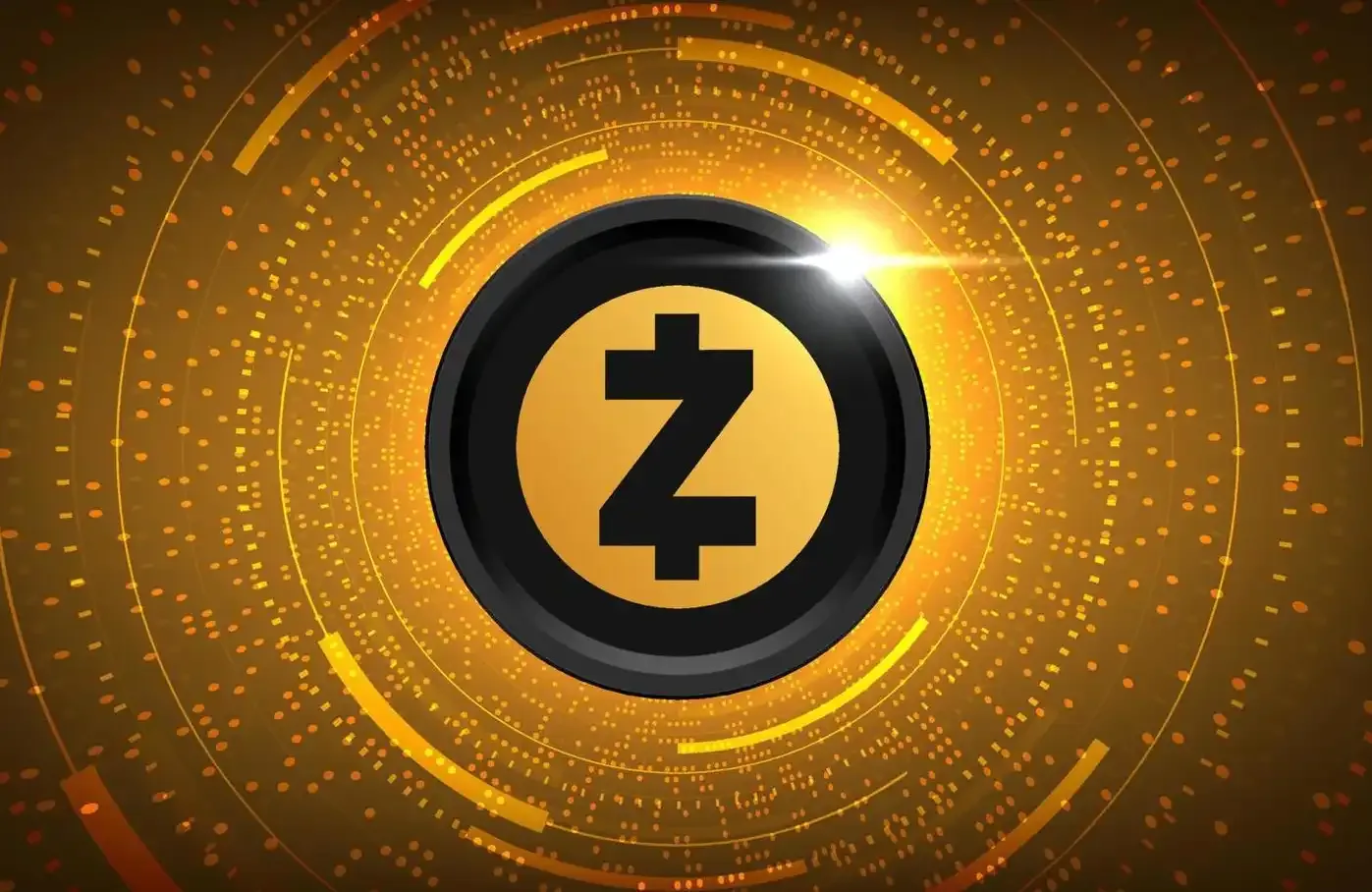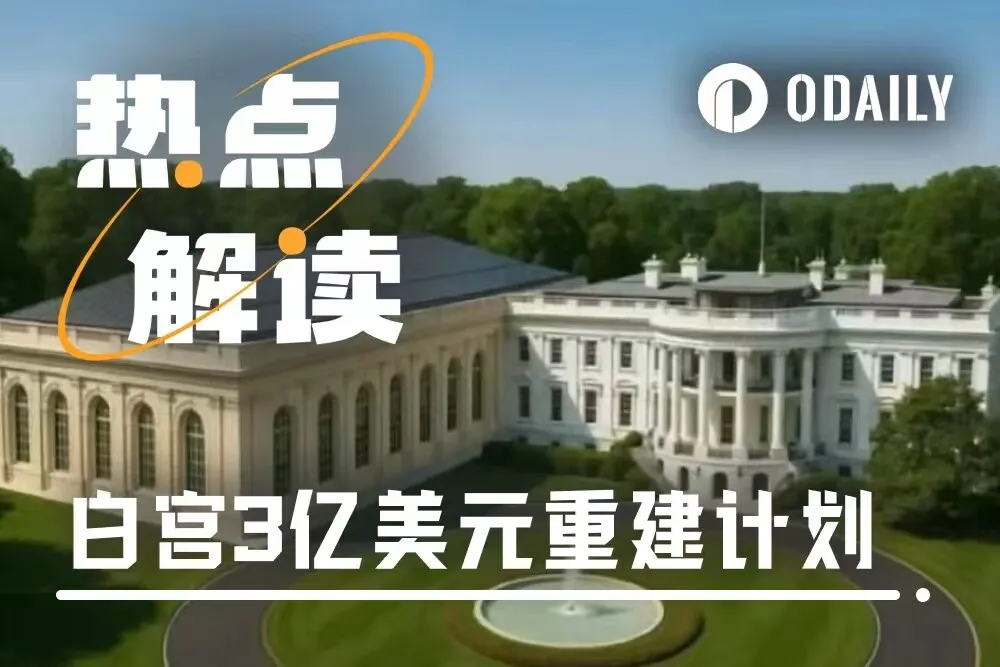In recent days, the x402 protocol has become extremely popular, with everyone talking about x402. So what exactly is it? What opportunities does it present?
After quickly learning all the information available in the market, I have organized it systematically here to share with everyone for further learning!
If we are to discuss x402, I believe we should look at this protocol from a higher perspective and a broader arena to understand its positioning.
This starts with stablecoin payments:
With the penetration of stablecoins, stablecoin payments have also emerged and exploded.
Overall, they can be divided into three categories:
B2B Payments: Clearing and settlement between institutions, enterprise-level payments
C2C Payments: Payments between individuals, peer-to-peer transfers
C2B Payments: Payments from individuals to merchants, purchasing scenarios
Currently, stablecoin payments mainly occur in the above three scenarios, but there is also a huge potential market: AI Payments.
What is the big trend?
The future is the intelligent era, where everything will be combined with AI.
AI Agents will become essential tools for every individual and even enterprises.
In the future, almost all C-end consumption and B-end settlements can be automatically executed by AI Agents.
So, based on this end state, what capability is currently lacking for AI Agents?
It is actually payment.
We must understand that payments in our traditional world require real-name KYC; you must have an "identity" to open a bank account and then make payments.
AI Agents are virtual entities; how can they open accounts and make payments?
At this point, the emergence of stablecoin payments perfectly fills this gap.
Blockchain is decentralized, and stablecoin payments based on blockchain allow AI Agents to directly create addresses on-chain, equivalent to "opening a bank account," and use stablecoins for free transfers, achieving value flow.
At this moment, we find that AI Agents not only have on-chain identities but also on-chain accounts, truly controlling "property rights."
Then, another question arises: What if there is currently no universal standard for stablecoin payments?
x402 was born to address this.
Next, let's take a closer look at this protocol.
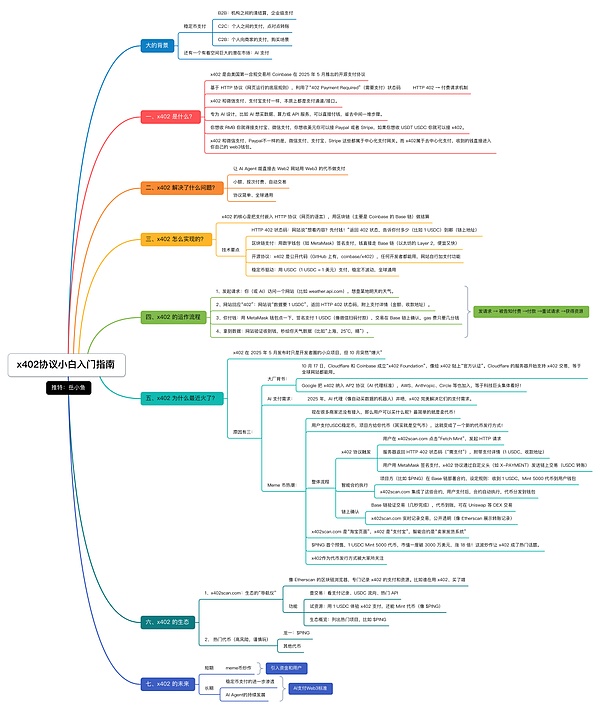
1. What is x402?
x402 is an open-source payment protocol launched by the first compliant exchange in the United States, Coinbase, in May 2025.
This protocol is based on the HTTP protocol (the underlying rules for web operation) and utilizes the "402 Payment Required" status code, hence the name x402.
Simply put, x402 is essentially a payment channel/interface, just like WeChat Pay and Alipay.
However, x402 is specifically designed for AI. For example, if an AI wants to buy data, computing power, or API services, it can pay directly, saving a lot of intermediate steps.
If you want to receive RMB, you need to accept Alipay or WeChat Pay; if you want to receive USD, you can accept PayPal or Stripe; if you want to receive USDT or USDC, you can accept x402.
The difference between x402 and WeChat Pay or PayPal is that WeChat Pay, Alipay, and Stripe are centralized payment gateways, while x402 is decentralized payment, with the money going directly into your own web3 wallet.
2. What problems does x402 solve?
In the rapidly developing AI landscape of 2025, AI Agents encounter a significant problem:
AI, like a super-smart assistant, wants to check data, use APIs, and buy computing power, but it cannot log into websites, enter passwords, or swipe cards like humans.
Traditional payment methods (credit cards, PayPal) are too slow and complex, charging 2-3% fees, which are not suitable for AI's "micro-payments" (pennies for data).
Thus, the main problems solved by x402 are:
Autonomous AI Payments: AI can directly pay for services like a human, for example, using 1 USDC to access a weather API, eliminating human intervention.
Micro-Payment Dilemma: Traditional payment fees are high (like 2% per credit card transaction), while x402 uses blockchain (primarily the Base chain) to charge only ultra-low gas fees (a few cents), making it suitable for small transactions.
Simplified Process: No registration or authentication is needed; x402 makes payments as simple as sending a message, being HTTP native, allowing developers to integrate with just a line or two of code.
Globally Universal: Using stablecoins (like USDC), it can be used globally without worrying about exchange rates.
x402 can be seen as giving AI a "digital wallet," enabling it to pay for things anytime and anywhere, saving time and effort, and being cost-effective!
x402 can be considered the "last mile" of AI payments.
3. How is x402 implemented?
The core of x402 is embedding payments into the HTTP protocol (the language of the web) and using blockchain (mainly Coinbase's Base chain) for settlement.
It sounds complex, but it's like adding a "payment button" to a webpage.
Here are some key technical points:
HTTP 402 Status Code: The website says, "Want to see the content? Pay first!" It returns a 402 status, telling you how much to pay (for example, 1 USDC) and where (on-chain address).
Blockchain Payment: Use a digital wallet (like MetaMask) to sign the payment, with the money going directly through the Base chain (Ethereum's Layer 2, cheap and fast).
Open Source Protocol: x402 is publicly available code (available on GitHub, coinbase/x402), allowing any developer to use it, similar to a "free blueprint" for adding payment functionality to websites.
Stablecoin Driven: Payments are made using USDC (1 USDC = 1 USD), which is stable and non-volatile, and universally applicable.
Simply put, x402 is like installing a "Alipay QR code" on a webpage, allowing AI to scan and pay, and the website immediately provides the AI with the requested item.
4. The Operation Process of x402
Let's take a practical example: suppose you (or AI) want to buy weather API data using x402.
The process is as follows:
Initiate Request: You (or AI) visit a weather website to check the weather in Shanghai for tomorrow.
Website Responds with "402": The website says, "The data costs 1 USDC," returning an HTTP 402 status code with payment details (amount, receiving address).
You Pay: Using the MetaMask wallet, you click to sign and pay 1 USDC (like scanning a QR code with WeChat), and the transaction is confirmed on the Base chain with a gas fee of just a few cents.
Receive Data: The website verifies the payment and instantly provides you with the weather data (for example, "Shanghai, 25°C, Sunny").
Abstracting the entire process: Request → Informed to Pay → Payment → Retry Request → Resource Obtained.
5. Why has x402 become popular recently?
When x402 was released in May 2025, it was just a niche project within the developer community, but it suddenly "exploded" in October.
The core reasons are threefold:
Backing from Major Companies:
On October 17, Cloudflare and Coinbase established the "x402 Foundation," effectively giving x402 an "official certification."
Cloudflare's servers began supporting x402 transactions, meaning that websites worldwide could use it.
Google included x402 in the AP2 protocol (AI agent standard), and AWS, Anthropic, Circle, and others joined in, indicating that tech giants collectively see its potential!
Demand for AI Payments:
In 2025, AI agents (like robots that automatically buy data) surged, and x402 perfectly addresses their payment needs.
Meme Coin Craze:
Currently, many merchants have not yet integrated, so what can users buy? The simplest option is to sell tokens!
Users pay with USDC stablecoins, and the project party gives them tokens (which are essentially air coins), turning it into a new token issuance method!
The overall process is as follows:
The first step is triggered by the x402 protocol,
Users click "Fetch Mint" on x402scan to initiate an HTTP request.
The server returns an HTTP 402 status code ("Payment Required"), along with payment details (1 USDC, receiving address).
Users sign and pay using MetaMask, and the x402 protocol sends the on-chain transaction (USDC transfer) through a custom header (like X-PAYMENT).
The second step is the execution of the smart contract,
The project party (like $PING) deploys a contract on the Base chain, setting the rule: upon receiving 1 USDC, mint 5000 tokens to the user's wallet.
x402scan integrates these contracts, and after the user pays, the contract executes automatically, distributing tokens to the wallet.
The third step is on-chain confirmation,
The Base chain verifies the transaction (completed in seconds), and the tokens arrive, ready for trading on DEXs like Uniswap.
x402scan records transactions in real-time, ensuring transparency (like Etherscan displaying transfer records).
Simply put, x402scan is the "Taobao page," x402 is "Alipay," the smart contract is the "seller's shipping system," and the minted tokens are the "goods for sale."
The first presale of $PING, 1 USDC for minting 5000 tokens, once reached a market value of over 30 million USD, increasing 18 times! This wave of speculation has made x402 a hot topic.
In summary, x402 is currently attracting attention as a method for token issuance.
6. How to Participate in x402?
x402 is not just a protocol; it also has an ecosystem, with core tools and projects as follows:
1. x402scan:
Like Etherscan, a blockchain explorer specifically recording x402 payments and resources, such as who is using x402 and what they have purchased.
Core Functions:
Check Transactions: View payment records, USDC flow, and popular APIs.
Try Resources: Use 1 USDC to experience x402 payments and mint tokens (like $PING).
Ecosystem Overview: Lists popular projects, such as $PING.
2. Popular Tokens (High Risk, Play with Caution)
These tokens are issued riding the x402 wave, but their volatility is like a roller coaster:
$PING: The leading meme coin of x402, on the Base chain, 1 USDC mints 5000 tokens, with a market value once reaching 30 million USD, increasing 18 times.
$SANTA: Related to AI agents, Virtuals ecosystem, 1 USDC Mint, market cap doubling.
$PAYAI: Solana cross-chain, AI payment narrative, community is hot.
$GLORIA: x402 information AI, recently doubled in price.
These tokens are mostly speculative, with weak fundamentals, like playing the lottery; you might make a lot of money or it could go to zero.
You can find a resource (like $PING) on the x402scan website, click "Try Resources" → "Fetch Mint."
Pay 1 USDC, sign to confirm, and the tokens will arrive (like buying a game skin).
If you want to trade, you can sell on Uniswap (Base chain), but be mindful of slippage (5-10%).
Other ways to play:
Developers: Want to add x402 payment to your website? Check the code on GitHub (coinbase/x402), it can be done in just a few lines.
AI players: Use x402scan to test API payments and experience AI automatically buying data.
Chase trends: On x402scan, follow new tokens (like $PONG), but don’t chase the highs!
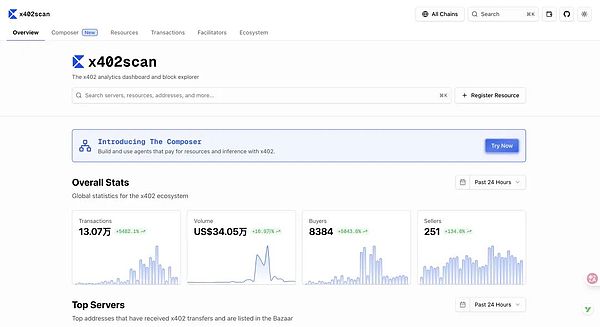
7. What is the future of x402?
The potential of x402 lies in making payments for AI and applications as ubiquitous as sending emails.
In the short term, it is still in a speculative phase, with people attracted by the wealth effect of meme coins in the x402 ecosystem.
However, with funding and market attention, the development of this sector will accelerate.
In the long term, as more websites support x402, AI agents will use it to buy data and computing power, becoming widespread with the AI boom.
This protocol could become the Web3 payment standard, akin to the position of HTTPS in Web2.
If you believe in the prospects of stablecoin payments and AI agents, then this sector is definitely worth paying attention to!
免责声明:本文章仅代表作者个人观点,不代表本平台的立场和观点。本文章仅供信息分享,不构成对任何人的任何投资建议。用户与作者之间的任何争议,与本平台无关。如网页中刊载的文章或图片涉及侵权,请提供相关的权利证明和身份证明发送邮件到support@aicoin.com,本平台相关工作人员将会进行核查。
